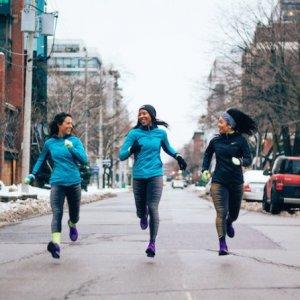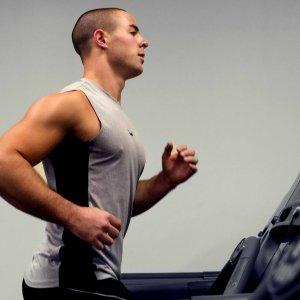2 Alternatives To High Altitude Training

There is always a nagging feeling that we need to push ourselves just a little bit more, go a little bit further, get there a little bit faster. It doesn’t matter what kind of runner you are, that feeling is there. The striving to excel drives us to do whatever we can to be the best versions of ourselves.

Some people solve this nagging feeling by doing high altitude training, which we talked about here. But for the rest of us, our lives and schedules don’t have room for a trip to the lofty altitudes to train. We need an alternative. We need another way to train to get similar benefits without it eating up such valuable time and resources.
Here are two alternatives to high altitude training that you can do without having to go to those high altitude locales, both which you can do by yourself or in a group of fellow runners.
(Author’s Warning: This article is only informing you of possible alternatives to high elevation training. Please note that there are hazards to any form of strenuous training. Be informed before making a decision on how you will train. Consult a doctor if you are not sure if you have any of the health risks to certain training regiments. Safe is always better than sorry.)
1. Hypoventilation Training
Hypoventilation training is really just a fancy way of saying “hold your breath” training. That is what hypoventilation training is at its most fundamental level. It is training with restricted breathing to reduce the amount of air in your lungs in a set pattern.

There are two set patterns that runners in Hypoventilation Training do: high lung volume or low lung volume. And it as simple as it sounds. In high lung volume, breath is held when the lungs are filled with air. “Inhale and hold” is the idea here. After a period of time, you exhale. In low lung volume, you exhale normally, and then hold your breath.
The benefit to this style of training is delaying the onset of fatigue, allowing you to train longer and improve your performance. This is intended to be a training exercise done over weeks. Only then did athletes notice any improvement in their running.
This training alternative is not beneficial for endurance sports. If you call yourself a marathon runner or a long distance runner, this type of training will not help you at all. Hypoventilation Training is perfect for middle-distance runners, people running between 600 yards to 2 miles (about 550 and 3200 meters).
Be careful using the hypoventilation training method. It is physically demanding. If you have ever had pulmonary or cardiovascular problems, this is not a method of training that is right for you. Some athletes have also experienced headaches due to their breath being held for too long or done repeatedly over too long a period of time.
2. Hypoxicator or Oxygen Mask Training
Hypoventilation may be about holding your breath, but this alternative to high altitude training is all about breathing.

A hypoxicator or oxygen mask is a device through which you breath in low oxygen air while you are training, also called hypoxic training. This is not to be confused with a hyperoxic training, where you would breath in high oxygen air. Hyperoxic training is a method of training, but not an alternative to high elevation training. You would not receive similar results that way.
Hypoxic training artificially creates the low oxygen atmosphere that you would experience at higher altitudes. This type of training can be done in a gym, training facility, or on your regular running path.
To achieve this low oxygen air that is necessary for high elevation training, athletes put on a mask through which they breath. This allows the wearer to set which altitude they wish to be training at. Low oxygen air can be simulated as if you were training at levels up to 21,000 feet (6,400 m).
The physical benefits of this training method are the same as real high altitude training. With lower oxygen being taken in by the body, you are able to push yourself to tolerate more discomfort from your workout, without the stress on your muscles and joints. Less stress on the body means that you will increase your strength and power, both needed for runners of any kind. The added bonus to this training method is being able to do this without leaving your city.
There are numerous places that a runner would be able to find a hypoxic training facilities. A simple search of local gyms would show that there are many places that you can go to engage in this form of altitude training. For those in small cities or towns, you may have more difficulty locating a gym, but that doesn’t mean that you can’t enjoy this training method.
Numerous companies rent or sell hypoxic masks and tents that you can use to enhance your workout. If cost is an issue for you, there are individuals online that do offer do-it-yourself instructions on how to make a hypoxic mask. Whichever way you go, be careful. Hypoxic training is stressful training, and just because you can make a mask by yourself doesn’t mean you are training in a wise or safe way.
Conclusion

We all want the edge. We all want to be faster, stronger, and go further than we have ever gone before. While high altitude training is a real possibility for some runners, it isn’t for others. Work, family, or even money can be what holds us back from reaping the benefits of high altitudes. That is why it is nice to know that there are alternatives to that kind of training, that we don’t have to miss out on getting a leg up on the competition and being the best runners that we can be.
So, don’t be upset when a friend or running partner takes off to the mountain ranges to train. You have options. There are alternatives that you can utilize. Just remember, be careful, and happy running.
Latest Articles
 Is It OK to Use Trail Running Shoes on the Road?While trail running shoes can be used on roads, especially in situations where a runner encounters mixed terrains or pref...
Is It OK to Use Trail Running Shoes on the Road?While trail running shoes can be used on roads, especially in situations where a runner encounters mixed terrains or pref... Is Running on a Treadmill Easier Than Running Outside?Runners have their own preferences, whether it is treadmill running, running outside on the road, or exploring trails. So...
Is Running on a Treadmill Easier Than Running Outside?Runners have their own preferences, whether it is treadmill running, running outside on the road, or exploring trails. So... How to Fix Sore Quads After Running?Rest, ice, gentle stretching, and over-the-counter pain relievers can help soothe sore quads after running. Also, ensure ...
How to Fix Sore Quads After Running?Rest, ice, gentle stretching, and over-the-counter pain relievers can help soothe sore quads after running. Also, ensure ... 10 Fruits With The Most Electrolytes to Replace Sports DrinksThese fruits are high in electrolytes such as potassium, magnesium, and calcium, essential for hydration, muscle function...
10 Fruits With The Most Electrolytes to Replace Sports DrinksThese fruits are high in electrolytes such as potassium, magnesium, and calcium, essential for hydration, muscle function...

